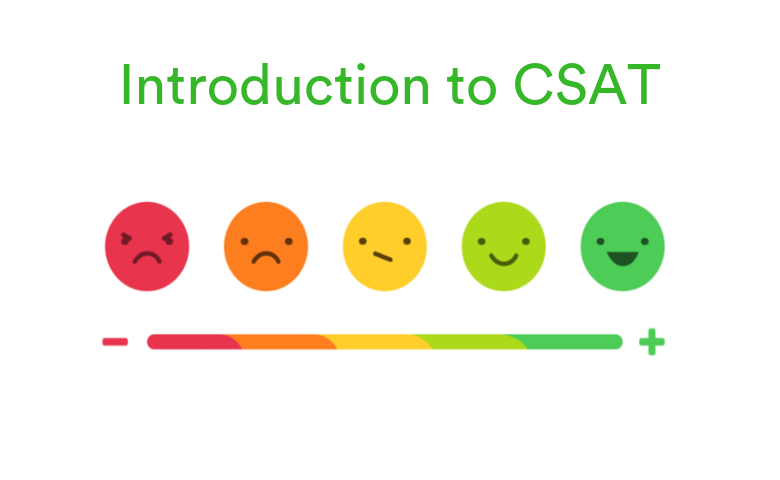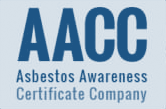Introduction of CSAT

What is CSAT?
CSAT is short for customer satisfaction score. It’s a commonly used metric that acts as a key performance indicator for customer service and product quality in all kinds of businesses.
How CSAT is measured?
CSAT is measured by one or more variation of this question that usually appears at the end of a customer feedback survey: ‘How would you rate your overall satisfaction with the service you received?’
Respondents use the following 1 to 4 scale:
- Very unsatisfied
- Unsatisfied
- Neutral
- Satisfied
- Very satisfied
The results can be averaged out to give a Composite Customer Satisfaction Score, although CSAT scores are more usually expressed as a percentage scale: 100% being total customer satisfaction, 0% total customer dissatisfaction.
Calculating CSAT
To do this, only responses of 4 ‘satisfied’ and 5 ‘very satisfied’ are included in the calculation, as it has been shown that using the two highest values on feedback surveys is the most accurate predictor of customer retention. (Number of satisfied customers (4 and 5)/ Number of survey responses) x 100 = % of satisfied customers.
How does CSAT differ from Net Promoter Score (NPS?)
CSAT measures customer satisfaction with a product or service, whereas Net Promoter Score measures customer loyalty to the organisation. CSAT targets a ‘here and now’ reaction to a specific interaction, product or event, but it is limited when it comes to measuring a customer’s ongoing relationship with a company. CSAT can also use multiple questions to focus on specific parts of the customer experience, e.g. ‘How would you rate your overall satisfaction with the telephone service you received /helpfulness of assistant/delivery?’. Conversely, NPS’s single-question loyalty measure ‘How likely is it that you would recommend [Organisation X/Product Y/Service Z] to a friend or colleague?” asks customers to take a much wider view of the brand or product, and focuses on their intention, rather than their overall feeling of satisfaction.
Using CSAT
CSAT, like NPS, is just a measure of customer experience. It’s what you do with the scores to drive and improve it that really counts. CSAT (and NPS) scores should be supplemented with further qualitative research to understand the drivers behind the scores so you can take action to improve key areas.
It’s a great measure to Benchmark
Keeping a close eye on customer satisfaction over time is great because it helps us to track how well any changes we have made to our business have been received by our customers. Rupert Smith Operations Director, comments: “We now have a wealth of choice in most industries with traditional players and SME’s competing for market share. If we want to survive, we have to prioritize customer satisfaction and offer a premium customer service.If we don’t do this, customers will be quick to shout about their bad experiences and ultimately turn to the competition.”
With this in mind, it is good practice to benchmark our CSAT performance to assess how customers are responding to our changes, but it can also be applied to setting internal CSAT benchmarks. For example, if we have an overall CSAT rating of 80%, we can set a target of reaching 85% in a certain amount of time. Then, we can focus on what we need to do to “move the needle”. But don’t just focus on failures in trying to improve CSAT, assess what we have done that has improved CSAT and analyse how we can repeat such a success and create happier customers.
Top 5 Reasons why Customer Surveys are important
Repeat Customers: Satisfied customers are likely to purchase from you again. One easy way of knowing this is through customer satisfaction surveys. Ask them to rate their satisfaction levels on a scale of 1 to 10 and see who will be happy to purchase from you in the future. Customers that rated you 7 or more are satisfied and are likely to engage with your business again. A score of 6 or below is cause for concern; these customers are unhappy with you and are a huge attrition risk. Customers that rated 9 or 10 are your biggest advocates and most loyal customers. You may use them to promote your brand and improve your CSAT scores.
Customer Differentiator: Customer satisfaction is the key to making or breaking brands. In this competitive world of a huge number of brands, customer satisfaction has to be focal to your customer strategy. No amount of marketing campaigns and promotions will help you if your customers are not satisfied. Brands that have low levels of customer satisfaction are likely to perish in the future. Brands that have advocates are far likely to do better than brands that do not. You will have brand advocates when you have satisfied customers. So, as you see, it all begins and ends with customer satisfaction.

Reduce Customer Churn: Contrary to popular belief, pricing is not the main reason for customer churn. Yup, you guessed it right; it’s customer service. We know of several brands that have a huge customer base despite high prices. You can use customer satisfaction scores and inputs from your CSAT surveys to improve upon your customer service processes. Poor customer service quality will hurt you and cost you customers in the long term. Seek continuous customer feedback to track your progress and routinely share it with your customer service reps.
Decrease negative word of mouth: According to McKinsey’s research, an unhappy customer will talk about their experience to anywhere between 9-15 people. Considering the number of dissatisfied customers you may have, that’s a lot of negative press. This will directly impact your business revenue and brand reputation. Repeat business rides on customer satisfaction, and unhappy customers are detrimental to your business. There will always be customer churn, but you do not want to lose customers based on bad word of mouth. Conducting regular CSAT surveys will help you measure customer satisfaction and identify factors that may be hampering your CSAT scores.
Retaining customers is cost effective: The cost to acquire new customers is 6-7 times more than retaining your current customers. This puts into perspective how vital customer satisfaction is. Rather than spending huge amounts of money on acquiring new customers, spend a fraction of it on improving your existing processes and systems to retain customers. This will go a long way in saving costs and growing your business revenue.
Top five key benefits of customer satisfaction
Brands need to understand customer satisfaction benefits before they invest effort and resources in processes and systems to improve their CSAT score. Here are some key benefits of customer satisfaction that all brands need to take into account.
Customer loyalty: When your customers are satisfied, they believe in the brand and become loyal. These loyal customers give brands repeat business and form a major part of the revenue. Losing customers takes a huge toll on your business revenue and customer churn numbers. Adobe’s report said loyal customers spent 67% more than new ones via repeat orders, upsells, etc. Add to this the positive word of mouth to friends and family from your loyal customers, and it really starts to add up. Satisfied existing customers feel they can promote the brand to their loved ones for the great experiences they’ve had.
Support Pillars: Satisfied customers are more likely to stand by in times of crisis; they care for the brand and want to see it thrive. This has been observed in many cases for big brands such as McDonald’s, when there rumors of caterpillars in their foods. They trust the brand and are understanding of any shortcomings or crisis that may befall them.
Sales Revenue: Brands focussing on customer satisfaction actively have healthy sales revenue. They do not lose old customers and have a steady revenue stream from repeat business. Customer satisfaction and increased revenue are directly correlated. Satisfied customers stay loyal to your brand, interact with it, buy ofter, and make recommendations to their colleagues, friends, and family. Run online customer surveys to note which areas are impacting customer satisfaction negatively and need improvement. This will help improve customer satisfaction and reduce customer churn.

Boost brand reputation and popularity: Customer satisfaction impacts brand reputation and popularity. See customer feedback and figure out which areas could be improved and improve satisfaction. Is it accounts or customer service? Don’t be afraid to ask your customers; honest feedback will help manage expectations and act accordingly. Famous brands have dedicated teams and initiatives for improving customer satisfaction, which helps them achieve high sales figures.
Reduce marketing expenses: Satisfied customers are your biggest advocates. Their positive word-of-mouth lends your brand credibility, popularity, and helps acquire new customers. This saves brands a lot of money that they would spend on marketing and promotional campaigns to acquire new customers.
Conclusion
CSAT is a powerful customer satisfaction metric to calculate as it gives a simple, numeric representation of customer satisfaction level. Measuring the metric will help us make enlightened decisions to improve the specific touchpoints that will create the added value which is central in our core values.
Should you require any further information about your customer CSAT reports, please do not hesitate to contact me; [email protected]
















